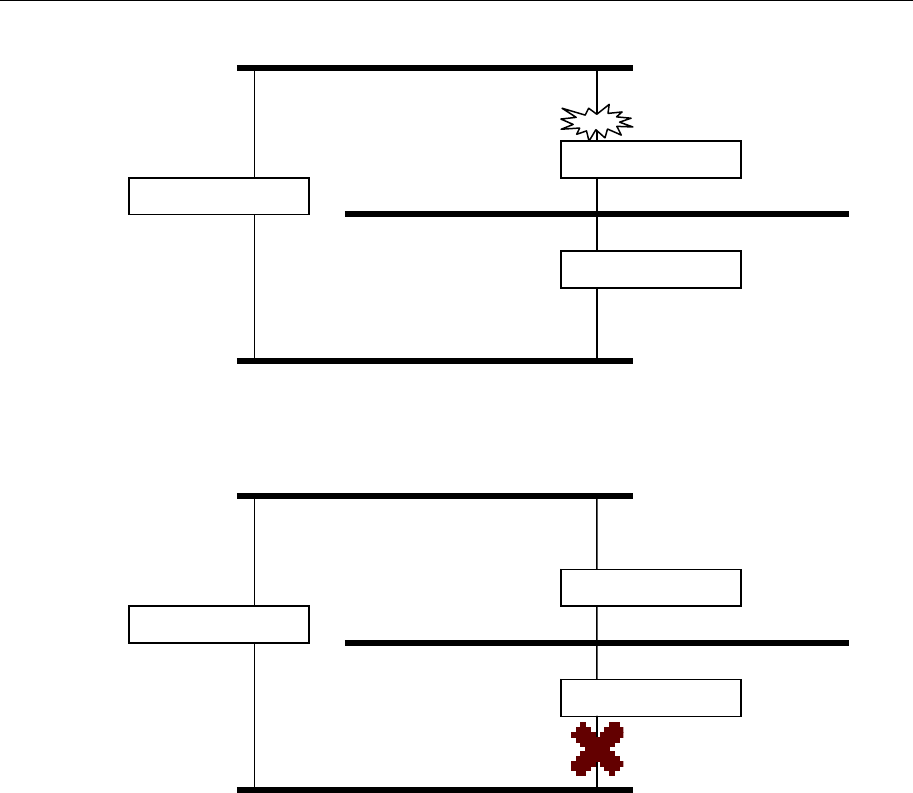
EDS-518A Series User’s Manual Featured Functions
3-23
What happens if a link failure is detected? As shown in next figure, the STP process reconfigures
the network so that traffic from LAN segment 2 flows through Bridge B.
STP will determine which path between each bridged segment is most efficient, and then assigns a
specific reference point on the network. When the most efficient path has been identified, the other
paths are blocked. In the previous 3 figures, STP first determined that the path through Bridge C
was the most efficient, and as a result, blocked the path through Bridge B. After the failure of
Bridge C, STP re-evaluated the situation and opened the path through Bridge B.
How STP Works
When enabled, STP determines the most appropriate path for traffic through a network. The way it
does this is outlined in the sections below.
STP Requirements
Before STP can configure the network, the system must satisfy the following requirements:
y Communication between all the bridges. This communication is carried out using Bridge
Protocol Data Units (BPDUs), which are transmitted in packets with a known multicast
address.
y Each bridge must have a Bridge Identifier that specifies which bridge acts as the central
reference point, or Root Bridge, for the STP system—bridges with a lower Bridge Identifier
are more likely to be designated as the Root Bridge. The Bridge Identifier is calculated using
the MAC address of the bridge and a priority defined for the bridge. The default priority of
EDS-518A is 32768.
Brid
g
e B
Brid
g
e C
LAN 1
LAN 2
LAN 3
Brid
g
e A
Brid
g
e B
Brid
g
e C
LAN 1
LAN 2
LAN 3
Brid
g
e A


















